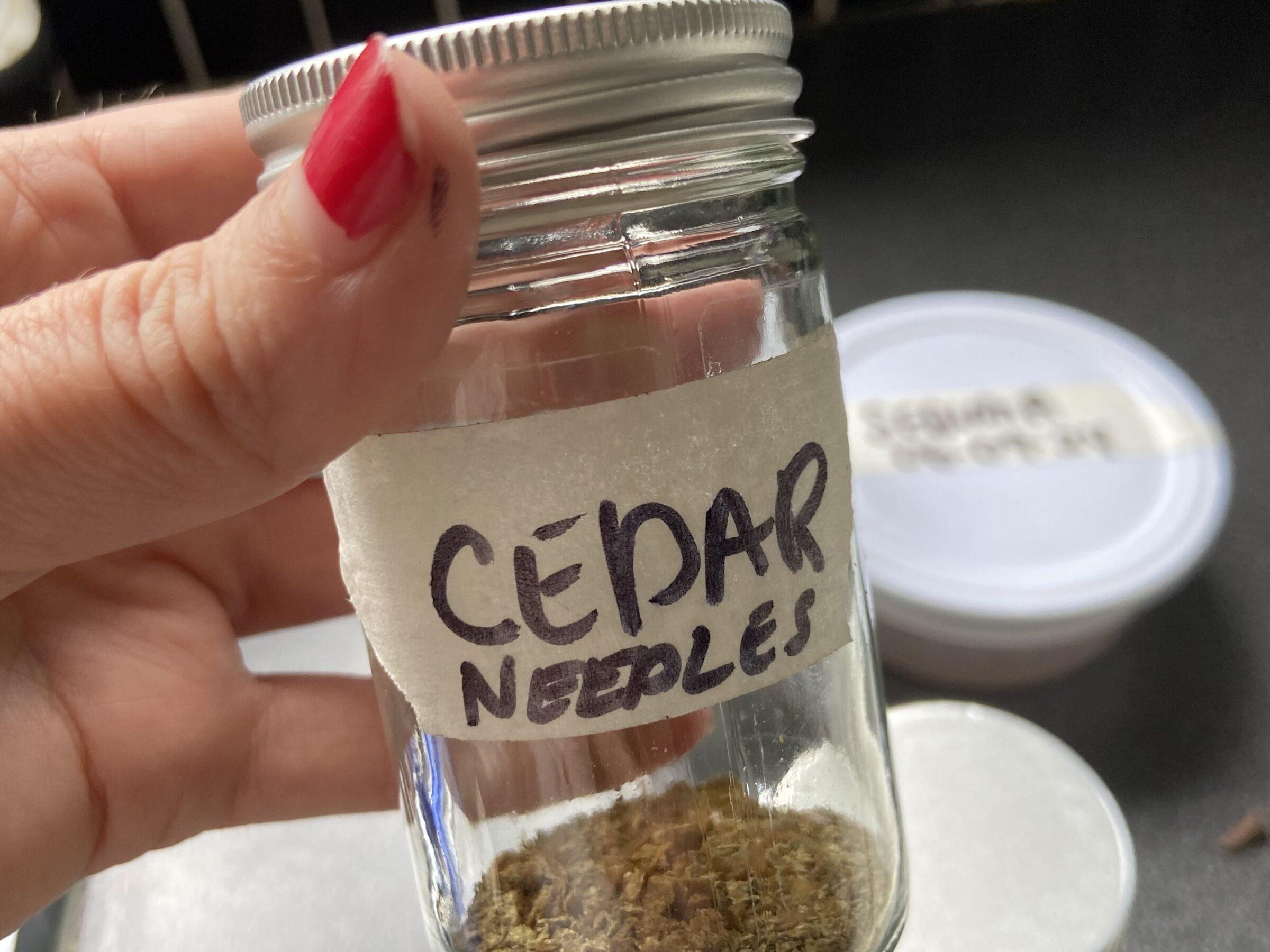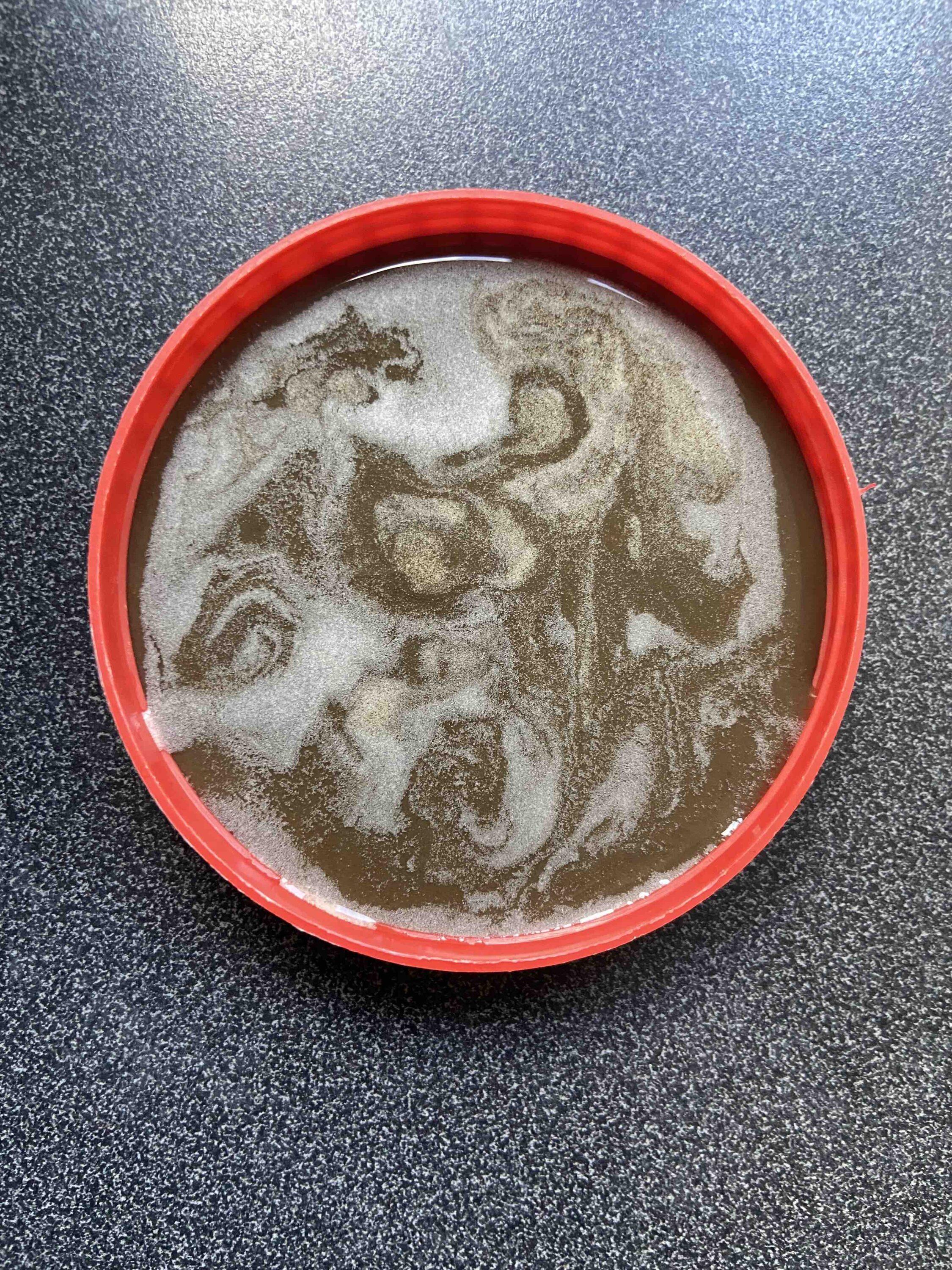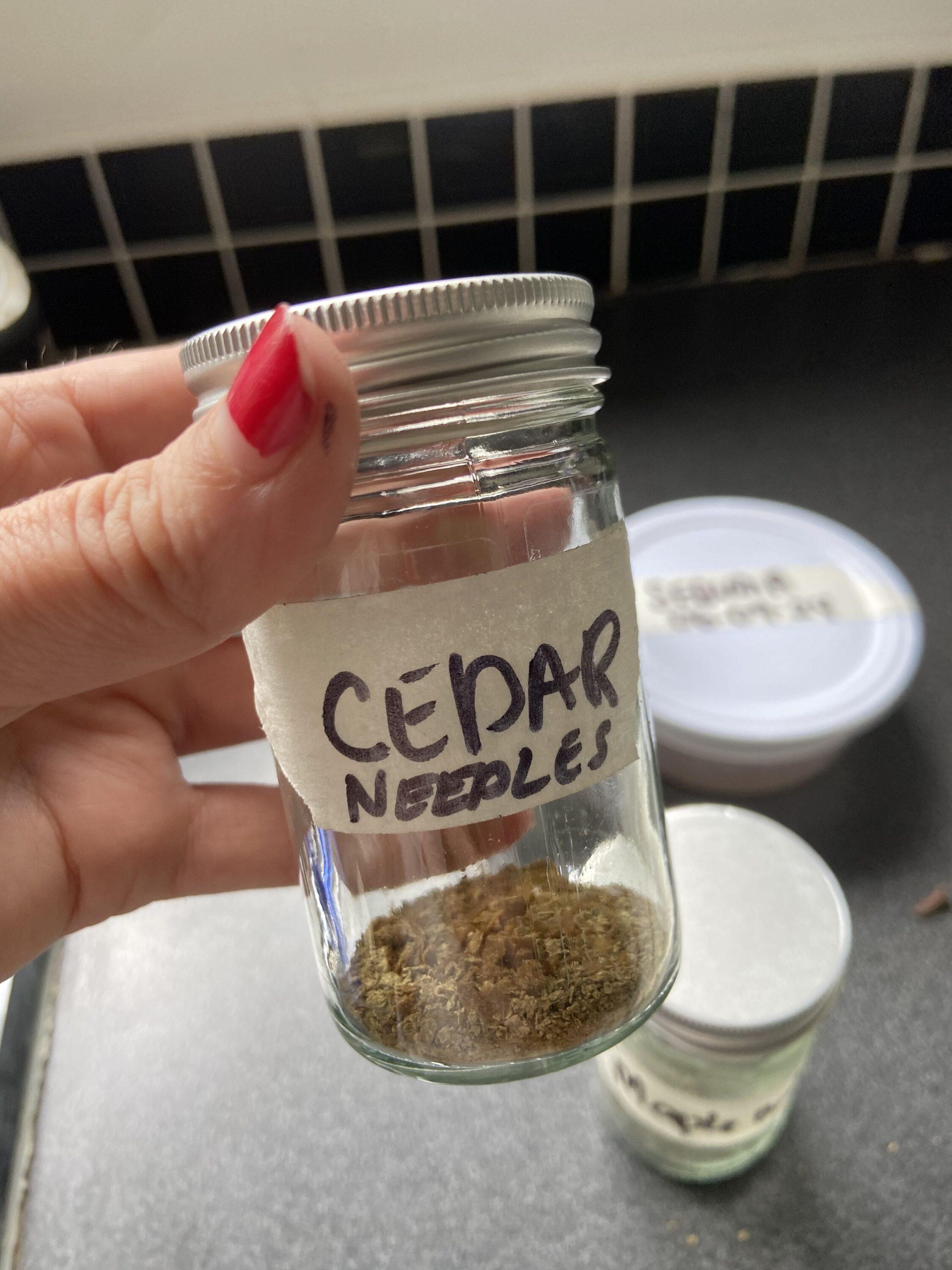Back in March, I was given the task to look for and collect Norwegian Maple buds- for their incredible yellow-making ability, by my ink-making mentor Carolyn Morton, in preparation for an upcoming zoom-laking-lesson. (Laking is the process of making a dried pigment from ink). At the time, the budding Norwegian Maples were apparently abundant where she lives, but I did not see any in my area. However, I did find Field Maple and Sycamore Maple and collected some buds accordingly. I also collected Oak buds, Cedar needles and more Sequoia pine cones. Only small handfuls of each, but enough to have a play.

First, I made the ink by grinding up the material and then let it soak until I had time for the next step- which was to simmer with 2:1 vinegar and salt.
I then drained through coffee filters and saved the pulp for future bark paintings.
I plopped in a few cloves and set in fridge to preserve the inky water until our zoom date.
After watching Carolyn’s experimental alchemy, I had a go at my own. I microwaved my inks for a few seconds to get to room temp (after being in the fridge for a week or so). I then added 2g alum and 1g soda crystals to 100 ml of each ink and stirred until foamy. The pigment then slowly separated to the bottom of the jars and over the next few days I tipped out the clear water and added fresh water, until I had time to move onto next step- which was to drain as much of the water out as possible and put the remaining pigment slush into plastic trays/lids to dry out completely into flaky bits. Some of the pigments separated better than others- and easily drained and transferred into the plastic lids. However, the sequoia for example, didn’t separate as well, and I struggled to pour out water without losing precious pigment- so I ended up straining through coffee filters instead. Pros and cons- Carolyn suggested that we lose pigment to the coffee filters, which is why she opts to simply pour out the clear water; little at a time until she can transfer the sludge into plastic trays. Using the plastic trays- I noticed the ones with less water obviously dried up faster, while the one with more water was taking so long, it was beginning to get mouldy. So something to be careful with- but it is hard to tip out the clear water without losing pigment. When you’re working in large quantities, I suppose its not such a big deal- but I had such a tiny amount to begin with, I didn’t want to lose a drop!
I left the muddy coffee filters out to dry alongside the lids of sludge (forgot to take a pic). The filters dried up first, and I easily scraped the flakes of pigment into a container. The remaining pigments sat out a few days, much to the amusement of my family and curiosity of my cats- and when it looked as if Maple might go completely mouldy, I went ahead and set by the heater for about an hour until they dried completely.
Aren’t they cute?! I look forward to testing out their colours, but that will have to wait til I get back from Colchester- where I’ll be focussing on my other project: England is a Forest…
More soon.












